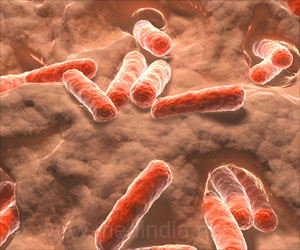A research team from Massachusetts Institute of Technology has reported the development of bacteria-resistant films applied to medical devices and other surfaces to ward off microbial accumulation.
A research team from Massachusetts Institute of Technology has reported the development of bacteria-resistant films applied to medical devices and other surfaces to ward off microbial accumulation.
They claim to have created ultrathin films made of polymers that could be applied to medical devices and other surfaces to control microbe accumulation.The team revealed that they could control the extent of bacterial adhesion to surfaces by manoeuvring the mechanical stiffness of polymer films called polyelectrolyte multilayers.
Thus, the films could be designed to prevent accumulation of hazardous bacteria or promote growth of desirable bacteria.
"All other factors being equal, mechanical stiffness of material surfaces increases bacterial adhesion," said Krystyn Van Vliet, the Thomas Lord Assistant Professor of Materials Science and Engineering and the paper's anchor author.
The team led by Van Vliet conducted the study using three strains of bacteria Staphylococcus epidermidis, commonly found on skin, and two types of Escherichia coli.
Stiffness has often being overlooked while conducting studies how bacteria adhere to surfaces in favour of other traits such as surface charge, roughness, and attraction to or repulsion from water.
Advertisement
The new films could be combined with current methods of repelling bacteria to boost their effectiveness, said Michael Rubner, an author of the paper and director of MIT's Center for Materials Science and Engineering.
Advertisement
These could also be used on medical devices that go inside the body, such as stents and other cardiac implants.
"Once a foreign object enters into the body, if you can limit the number of bacteria going in with it, this may increase the chances that the immune system can defend against that infection," said Todd Thompson, a graduate student in the Harvard-MIT Division of Health Sciences and Technology, co-lead author.
Van Vliet says the team's results could be explained by the relationship between surfaces and tiny projections from the bacterial cell walls, known as pili. Stiffer surfaces may reinforce stronger, more stable bonds with the bacterial pili. The researchers are now working on figuring out this mechanism.
The study appears in journal Biomacromolecules.
Source-ANI
RAS/L






